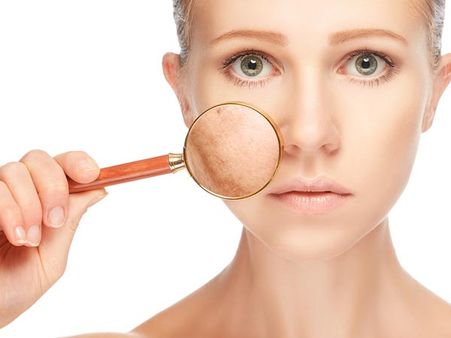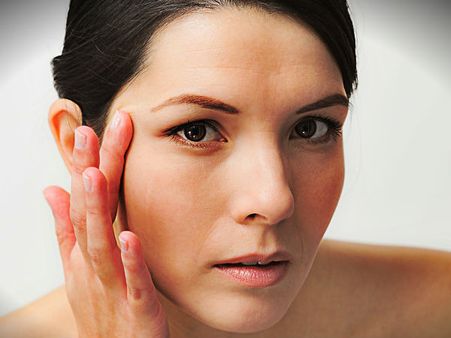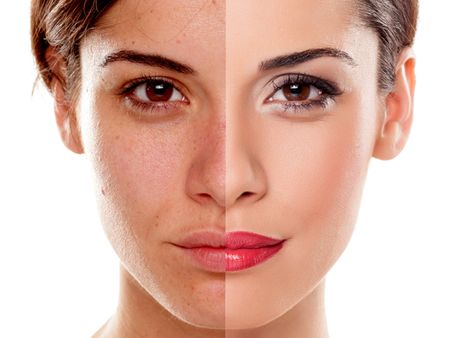Just In
- 8 hrs ago

- 8 hrs ago

- 9 hrs ago

- 10 hrs ago

Don't Miss
- News
 Dailyhunt ‘Trust Of Nation’ Survey: 64% Respondents Want Narendra Modi As PM Again
Dailyhunt ‘Trust Of Nation’ Survey: 64% Respondents Want Narendra Modi As PM Again - Finance
 7:1 Bonus, 1:10 Split: At Rs 3.5, NBFC Penny Stock Hits Back-To-Back Lower Circuits; Big Announcement Soon
7:1 Bonus, 1:10 Split: At Rs 3.5, NBFC Penny Stock Hits Back-To-Back Lower Circuits; Big Announcement Soon - Movies
 EXCLUSIVE Interview! Alankrita Sahai On Journey From Beauty Pageant Winner To Films, Nepotism In Bollywood
EXCLUSIVE Interview! Alankrita Sahai On Journey From Beauty Pageant Winner To Films, Nepotism In Bollywood - Sports
 KKR vs RR, IPL 2024 Twitter Reaction: Sunil Narine hailed by Social Media after Stellar Century
KKR vs RR, IPL 2024 Twitter Reaction: Sunil Narine hailed by Social Media after Stellar Century - Education
 UPSC CDS 1 Exam on 21 April 2024
UPSC CDS 1 Exam on 21 April 2024 - Automobiles
 Jeep Compass Gets More Powerful 268.3bhp Turbo Petrol Engine – Check Out All The Details Here
Jeep Compass Gets More Powerful 268.3bhp Turbo Petrol Engine – Check Out All The Details Here - Technology
 Redmi Pad SE With 90Hz Display Launching on April 23 in India; Could Be Priced for Less Than Rs 20,000
Redmi Pad SE With 90Hz Display Launching on April 23 in India; Could Be Priced for Less Than Rs 20,000 - Travel
 From Coconut Breaking on Head to Men Dressing as Women: 12 Unique Indian Rituals Explored
From Coconut Breaking on Head to Men Dressing as Women: 12 Unique Indian Rituals Explored
Melasma (Chloasma): What Are The 6 Factors That Cause It? Symptoms, Treatments And Prevention
Melasma is a common hyperpigmentation disorder characterised by dark grey-brown patches on the skin, especially on the face and sun-exposed areas. The condition is more prevalent in women than in men. When melasma occurs during pregnancy, it is known as chloasma.

In melasma, the skin becomes darker than the surrounding areas. It mainly occurs on cheeks and forehead on both the sides and are approximately similar in pattern. Though the dark patches aren't harmful, they can cause embarrassment and low confidence in people. Let's know more about this skin condition.


Causes Of Melasma
Melanin is a natural skin pigment that gives skin its colour. In dark complexion individuals, the amount of melanin is large while in lighter complexions, the amount is low. Skin cells named melanocytes produce melanin. Though these cells are equal in every person, the amount of melanin secreted gives complexions to people. [1]
Melasma occurs when melanocytes dysfunction. The exact cause is still unknown but several triggering factors may cause dark patches on the skin. The factors are:
- Sunlight: The UV rays of the sun sometimes stimulate melanocytes cells and make them produce more melanin causing melasma.
- Pregnancy: Melasma is also known as ‘mask of pregnancy' as it tends to appear in around 70 per cent of women during their second or third trimesters. During pregnancy, hormonal balance disrupts, including the imbalance of estrogen and progesterone that results in increased secretion of melanin. [2]
- Skin complexion: People whose skin tone ranges from medium to medium-dark are more susceptible to the condition. This is because they easily get tanned in the sunlight due to the excess production of melanin. In people with very light or very dark skin tone, the condition is uncommon.
- Medications: Birth control pills, anti-seizure medications and hormone replacement therapy sometimes make the skin very sensitive. In this case, sun exposure becomes a high-risk factor and causes melasma.
- Genetics: Melasma is not hereditary but it is mostly seen in people who have relatives with the same problems. If melasma is in the family, even a small triggering factor can cause the disorder.
- Thyroid problems: Thyroid gland in the body produces hormones that regulate most of the body functions. When thyroid gland dysfunctions, it affects the hormones which in turn, affects the melanin production and cause melasma. [3]

Symptoms Of Melasma
- Darker skin in certain areas compared to the normal ones.
- Discoloured patches on the forehead, upper lips, both the cheeks and bridge of the nose. [4]
- Dark patches on the arms and neck (rare)
- Uneven and blotchy skin tone.
- Discoloured spots or irregular borders on the skin.
- Light brown or black discolouration.
- Matching and symmetrical patches on both cheeks
Note: Melasma does not cause any pain, itching or burning sensation.

Risk Factors Of Melasma
- Birth control pills [5]
- Sunlight
- Laser treatments
- Hypothyroidism
- Stress


Complications Of Melasma
Melasma is not a chronic condition but it can get permanent if not treated properly. Sometimes, it may go away on its own but without treatment, the condition stays for longer causing darker skin of multiple layers. This causes annoyance embarrassment to people.

Diagnosis Of Melasma
- Wood's lamp examination: The lamp emits long-wave UV light that helps in getting a clear view of patterns, sun damage and layers of melasma which cannot be viewed with the naked eye. It also helps rule out bacterial or fungal infections. [6]
- Skin biopsy: In this method, a small skin part is taken and viewed. The test helps to confirm melasma. However, it is not carried out often. The process is done when the medical expert doubts that dark patches can be due to other reasons such as Addison's disease, maturational dyschromia, lupus, inflammatory acne or freckles.

Treatment Of Melasma
When melasma occurs during pregnancy, it goes away on its own once the pregnancy ends. The condition does not cause any health problem, so it can only be treated cosmetically, depending on one's choice. Some treatment methods include:
- Topical steroids: To lighten the affected areas. [7]
- Chemical peels: In this method, the top layer of the dark skin is removed chemically to get the lighter tone. The process requires follow-ups and certain skin practices.
- OTC products: Suggested by experts when melasma is limited to a small area and less dark. These products are also suggested to maintain the skin after proper treatment.
- Laser treatments: A cosmetic application in which laser light is used to treat underlying skin conditions.
- Microdermabrasion: It is a cosmetic procedure in which the skin's outermost layer is exfoliated. It is a painless procedure that makes the skin softer and glowing. [8]
Easy
And
Effective
Home
Remedies
for
Melasma
(Dark
Patches
On
The
Skin)

How To Prevent Melasma
1.
Cover
your
sun-exposed
areas
such
as
cheeks,
forehead
and
lips
every
time
you
walk
out
in
the
sun.
2.
Apply
sunscreen
with
SPF
30
or
more
every
day..
3.
Wearing
a
hat
for
an
outdoor
activity
is
also
a
good
option.
4.
Avoid
sunbath
during
pregnancy.
5.
If
you
are
on
certain
skin
treatment,
follow
it
well
for
the
best
result.
6.
Avoid
scrubbing
as
it
may
irritate
the
skin.
7.
Wear
make
ups
right
for
you
skin
(optional)

Common FAQs
1. Will melasma go away?
If
taken
proper
care,
melasma
can
go
on
its
own.
However,
in
most
of
cases,
a
good
treatment
removes
the
dark
patches.
Just
be
patient
and
take
care
of
your
skin
daily.
2.
What
hormone
causes
melasma?
Estrogen, the primary female sex hormone is responsible for melasma. This is the reason why melasma is higher in female than male.Progesterone is also somewhat responsible for the condition.
3. What makes melasma worse?
Sunlight makes melasma worse. High exposure to UV rays stimulates the excess production of melanin. However, when sun exposure is reduced, the skin may get back to normal.
-
 pregnancy parentingWhat Is Pregnancy Mask (Melasma): Ways To Manage It
pregnancy parentingWhat Is Pregnancy Mask (Melasma): Ways To Manage It -
 wellnessEasy And Effective Home Remedies for Melasma (Dark Patches On The Skin)
wellnessEasy And Effective Home Remedies for Melasma (Dark Patches On The Skin) -
 disorders cureIs Hyperpigmentation A Serious Skin Condition? Know About The Causes, Treatments and Prevention
disorders cureIs Hyperpigmentation A Serious Skin Condition? Know About The Causes, Treatments and Prevention -
 body careWhat To Do When See Pigmentation Spots On Your Body
body careWhat To Do When See Pigmentation Spots On Your Body -
 healthRare Skin Disorder Causes Skin To Peel Off 10 Times Faster In Woman; Know More About It
healthRare Skin Disorder Causes Skin To Peel Off 10 Times Faster In Woman; Know More About It -
 disorders cureNY Man Treated For Rhinophyma Or Bulbous Nose: Causes, Symptoms And Treatment Of The Condition
disorders cureNY Man Treated For Rhinophyma Or Bulbous Nose: Causes, Symptoms And Treatment Of The Condition -
 disorders cureInternational Albinism Awareness Day 2021: What Is Albinism? Causes, Symptoms And Treatments
disorders cureInternational Albinism Awareness Day 2021: What Is Albinism? Causes, Symptoms And Treatments -
 disorders cureIntertrigo (Inflammation Of Skin Folds): Causes, Symptoms, Risk Factors, Treatments And Prevention
disorders cureIntertrigo (Inflammation Of Skin Folds): Causes, Symptoms, Risk Factors, Treatments And Prevention -
 disorders cureActinic Keratosis: Causes, Symptoms, Risk Factors, Treatments And Prevention
disorders cureActinic Keratosis: Causes, Symptoms, Risk Factors, Treatments And Prevention -
 disorders cureCan The Same Person Have Different Coloured Eyes? Causes, Symptoms And Treatment Of Heterochromia
disorders cureCan The Same Person Have Different Coloured Eyes? Causes, Symptoms And Treatment Of Heterochromia -
 skin careTan Jabs To Tarnish The Moles On Your Splendor
skin careTan Jabs To Tarnish The Moles On Your Splendor -
 healthSolar Eclipse 2024: Dos and Don'ts for Pregnant Women During Surya Grahan
healthSolar Eclipse 2024: Dos and Don'ts for Pregnant Women During Surya Grahan


 Click it and Unblock the Notifications
Click it and Unblock the Notifications



